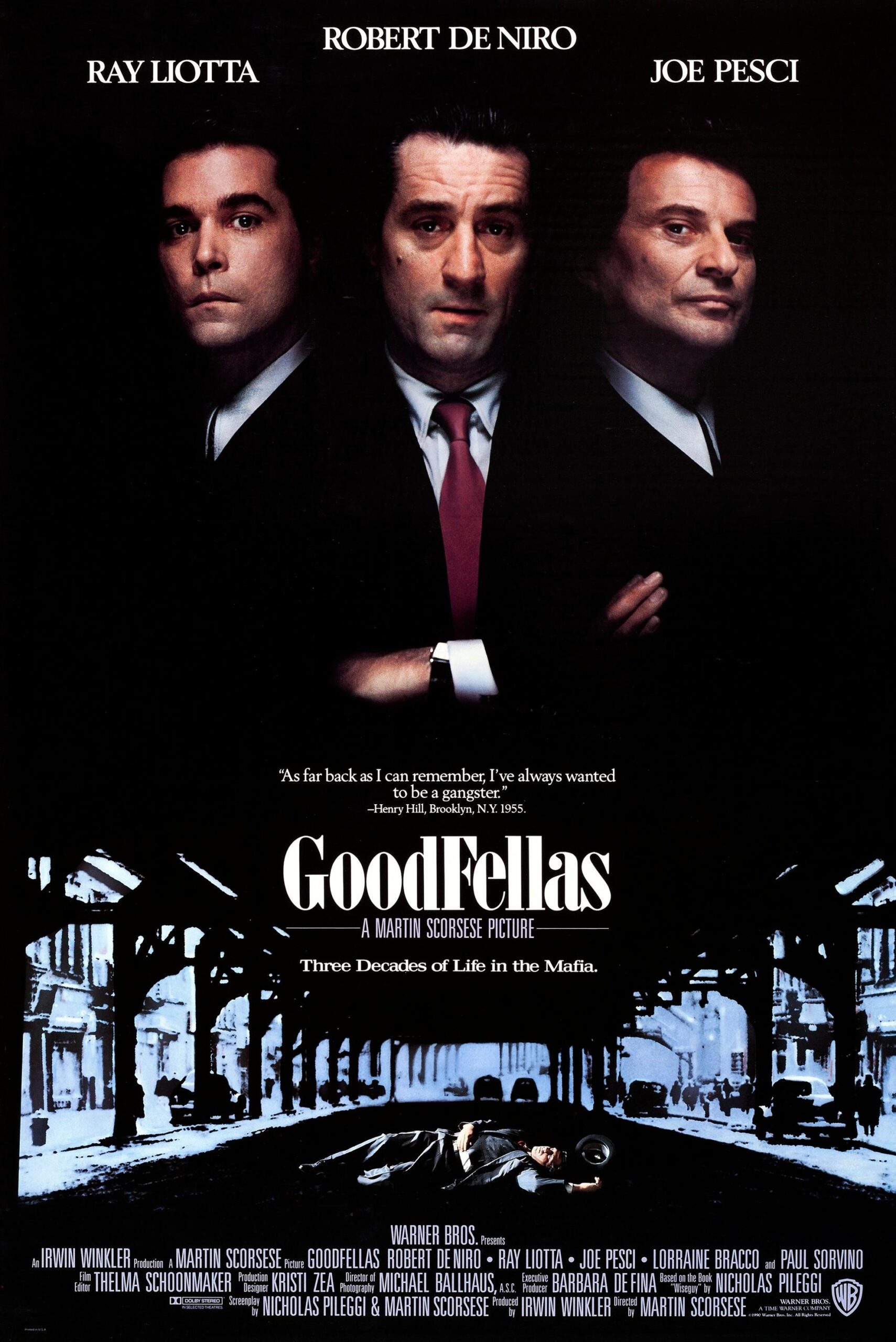“Goodfellas” (1990): A Cinematic Symphony of Crime and Consequence – Film Review

When “Goodfellas” premiered in 1990, directed by the legendary Martin Scorsese and written by Scorsese and Nicholas Pileggi, it wasn’t just a film that was released; it was a seismic shift in the landscape of gangster cinema. Based on Pileggi’s non-fiction book “Wiseguy,” the film narrates the rise and fall of mob associate Henry Hill, played with captivating nuance by Ray Liotta, along with his partners Jimmy Conway (Robert De Niro) and Tommy DeVito (Joe Pesci). This review delves into the intricate layers of “Goodfellas,” examining its narrative structure, stylistic choices, and the behind-the-scenes efforts that forged this magnum opus.
Crafting the World of “Goodfellas”
From the outset, Scorsese was adamant that “Goodfellas” would not romanticize the mafia lifestyle. This vision is evident in every frame, from the raw, unfiltered violence to the portrayal of the mob’s everyday banality. The film’s authenticity is partly owed to Pileggi’s detailed account of Hill’s life, offering a blueprint for Scorsese to build upon.
The casting of “Goodfellas” was a meticulous process, with Scorsese seeking a blend of established actors and fresh faces. Ray Liotta, despite not being the first choice for Henry Hill, brought a blend of charisma and vulnerability that anchored the film’s emotional core. Joe Pesci’s portrayal of the volatile Tommy DeVito, a role that earned him an Academy Award, was informed by the actor’s deep dive into the psyche of a man whose temper is as quick as his humor is dark.
Behind the Scenes: A Symphony of Collaboration
“Goodfellas” was a product of close collaboration between Scorsese and his ensemble cast, with much of the film’s dialogue being improvised to capture the natural flow of conversation among the characters. This improvisational method brought a level of authenticity and unpredictability to the interactions, particularly evident in the famous “funny how?” scene, which emerged from an anecdote Pesci shared with Scorsese about his own life.
The film’s editing, led by Thelma Schoonmaker, Scorsese’s longtime collaborator, was pivotal in maintaining the brisk pace and intricate narrative structure of “Goodfellas.” The use of rapid cuts and innovative camera work, including the iconic Copacabana tracking shot, served to immerse the viewer in Henry Hill’s world, making the audience complicit in his actions.
The Narrative Architecture
At its core, “Goodfellas” is a study of power, loyalty, and betrayal, themes that are woven into the fabric of the narrative. The film is structured around three distinct acts: the rise, the peak, and the fall of Henry Hill, mirroring the classic trajectory of a Greek tragedy. This structure is punctuated by key events that escalate the stakes, from the Air France heist to the Lufthansa heist, culminating in Hill’s ultimate betrayal of his mafia family.
The voiceover narration, a technique often criticized in cinema for its expository nature, is employed with masterful effectiveness in “Goodfellas.” Hill’s perspective not only guides the narrative but also offers insights into the psychology of his character, providing a window into the allure of the gangster lifestyle and its inevitable downfall.
Stylistic Brilliance and Cinematic Influence
“Goodfellas” is renowned for its stylistic boldness, from its choice of music to its cinematography. Scorsese’s use of contemporary music not only contextualizes the era but also enhances the emotional landscape of the film. Each song is carefully chosen to reflect the internal state of the characters or the dynamics of a particular scene.
The film’s influence on popular culture and subsequent cinema cannot be overstated. Its raw depiction of the mafia life, combined with its narrative and stylistic innovations, has inspired a generation of filmmakers. “Goodfellas” has become a touchstone for crime cinema, studied and revered for its artistry and its uncompromising vision.
Reflections on Legacy and Impact
“Goodfellas” remains a towering achievement in Martin Scorsese’s illustrious career, a film that redefined the gangster genre and captured the complexities of the human condition within the framework of organized crime. It is a testament to the power of cinema to explore the depths of ambition, greed, and redemption. The film’s legacy is not just in its critical and commercial success but in its enduring relevance, offering a mirror to the dualities of the American dream and the dark underbelly of its pursuit.
In the realm of cinema, “Goodfellas” is not merely a film; it is an enduring piece of cultural discourse, a mosaic of human frailty and the inexorable pull of the criminal underworld. As we revisit “Goodfellas” three decades after its release, its brilliance lies not just in the story it tells but in the way it tells it, through a lens that is both unflinching and empathetic. It stands as a monument to the art of filmmaking, a beacon for storytellers seeking to weave narratives that resonate with truth, complexity, and the indomitable spirit of innovation.




